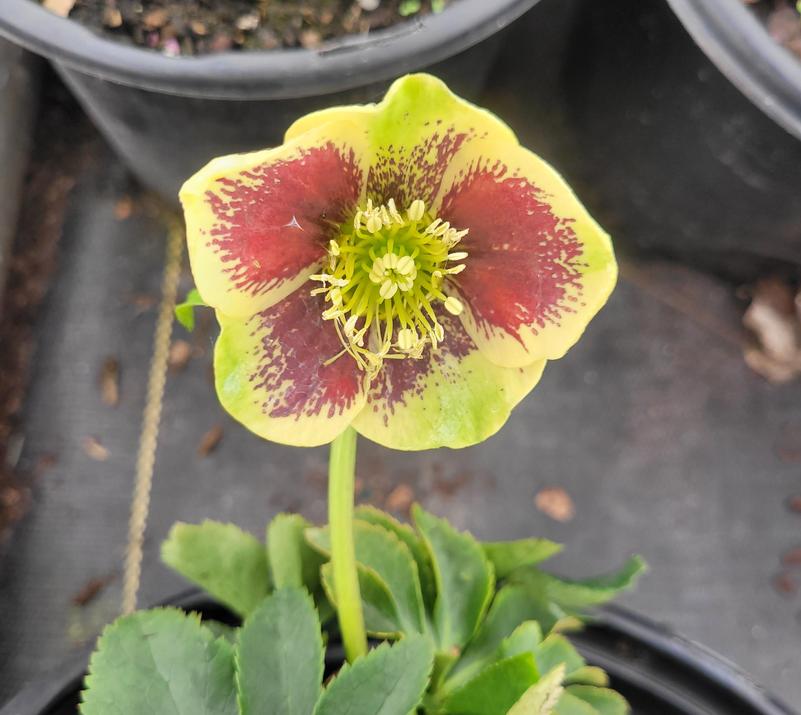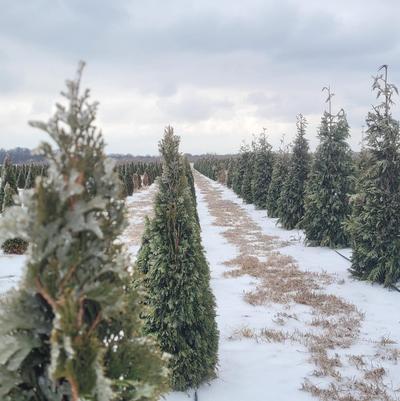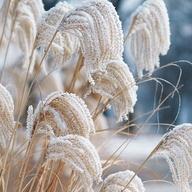Top 12 Unique Perennials for Shade
Grown by Home Nursery
Finding suitable plants that can thrive in a shady garden can seem like a discouraging task. The choices are actually more abundant than you might think. But what if you are looking for an exceptional plant that’s not so commonly seen, with unique qualities?

Top 12 Unique Perennials for Shade
Finding suitable plants that can thrive in a shady garden can seem like a discouraging task. But the choices are actually more abundant than you might think and include many commonly used and available plants such as hosta (Hosta), coral bells (Heuchera), English ivy (Hedera), lily turf (Liriope), bugleweed (Ajuga), Lenten rose (Hellebore), and caladium (Caladium). But what if you are looking for an exceptional plant that’s not so commonly seen, with unique qualities? The following is a list of perennial plants with eye-catching appeal that will grow and flower in part shade or shade, and are appropriate for moderate USDA Hardiness Zones.
-
Leopard Plant (Ligularia stenocephala ‘Bottle Rocket’), USDA Zones 4-8, 2-3’ tall by 2-3’ wide. This is one of the shorter Ligularia, but still with a very bold presence. Spikes of bright yellow flowers top the dense leafy mound of serrated heart-shaped leaves. All Ligularia require rich, humusy, medium to wet soils in part shade to full shade. Another notable variety is L. dentata ‘Britt Marie Crawford’.
- Foamy Bells (Heucherella Fun and GamesⓇ ‘Eye Spy’), USDA Zones 4-9, 9" tall by 18-21" wide. Heucherella is a hybrid between Heuchera and Tiarella and is less known in the gardening world. It can handle more shade and moisture than Heuchera and is generally more colorful than Tiarella. The lobed leaves of 'Eye Spy' are a delightful combination of chartreuse with a red central pattern following the leaf veins in a palmate fashion. Sprays of small pink flowers rise above the foliage in spring. Plant in shade to part shade and average well-draining soil.
- Japanese Forest Grass (Hakonechloa macra), USDA Zones 5-9, 1-2' tall by 1-2' wide, average to moist soil. The Japanese forest grasses can be planted in a range of exposure from mostly sunny to full shade but their color is better with a little sun. Forest grasses have a beautiful dense, drapey form with many of the cultivars having golden or chartreuse foliage. H. m. 'All Gold' is a brilliant gleaming gold while H. m. 'Aureola' is variegated with gold and green. Low maintenance.
- Siberian Bugloss (Brunnera macrophylla ‘Jack of Diamonds’), USDA Zones 3-8, 15" tall by 27-33" wide, part shade to full shade in moderately fertile, average to moist, well-draining soils. Established plants can handle dry summers and wet winters. Sprays of small bright blue flowers in spring top striking, large heart-shaped silver leaves set off by dark green edges and veins. There is an ever-growing number of cultivars of Brunnera plants, displaying silver markings, frosting or variegation, and usually pale or bright blue flowers. Other attractive cultivars are B. m. ‘Jack Frost’, and B.m. ‘Queen of Hearts’. Low maintenance.
- Lungwort (Pulmonaria ‘Spot On’), USDA Zones 3-9, 14-16” tall by 18-20” wide, part shade to full shade in average to fertile, moist, alkaline to neutral soil. A small dense mound of green lance-shaped leaves glows with silver spotting covering much of the foliage. Clusters of salmon-pink buds change to rich blue flowers in late spring. There are many Pulmonaria cultivars with varying patterns of white or silver markings and flowers in shades of red, pink, purple or blue, often occurring on the same plant as the flowers mature. Another worthy cultivar is P. ‘Raspberry Splash’. Powdery mildew can sometimes be a problem for Pulmonaria, but P. ‘Spot On’ is resistant. Low maintenance.
- Barrenwort (Epimedium ‘Amber Queen’), USDA Zones 5-8, 1-2’ tall by 2-3’ wide, part shade to full shade in neutral to slightly acidic soil. Best in moist soil but barrenworts can handle drier soil with slower growth. E. ‘Amber Queen’ has 4 seasons of interest since it is evergreen and has an incredibly long blooming season, and often reblooms in the fall. Long, heart-shaped leaves are mottled with burgundy red in spring, changing to bright green. Marmalade-orange blooms float above the leaves like little fairies. Other barrenwort cultivars may have lance- or heart-shaped leaflets, and flower clusters in shades of white, yellow, orange, pink, lavender, purple or red. Some are deciduous and some are evergreen. New leaves emerge with bronzy-pink tones turning green, and some cultivars’ leaves return to red tones in the fall. E. ‘Pretty in Pink’ is another outstanding cultivar. These plants are long-lived, drought-tolerant and low-maintenance.
- Indian Pink (Spigelia marilandica 'Little Redhead'), USDA Zones 5-9, 24-27" tall by 21-24" wide, light shade/part sun to shade but also grows in full sun with more moisture. Handles a variety of alkaline to neutral soils. Easy to grow in rich, moist, well-draining soil. In early summer, red trumpet-shaped flowers with yellow interiors face upwards over lance-shaped foliage, attracting hummingbirds and pollinators. The species is a woodland plant native to the southeastern United States. Drought tolerant once established.
- Jacob's Ladder (Polemonium x 'Heaven Scent'), USDA Zones 3-7, 2' tall by 15-18" wide, part sun in average to moist, well-draining soil. Although Polemoniums can grow in full sun they need some afternoon shade in the south. 'Heaven Scent' has loose clusters of fragrant blue flowers in late spring. The delicate leaves of Polemoniums have a unique texture with simple ovate leaflets running along compound leaves. 'Heaven Scent' is especially attractive with a purplish tint to its green leaves. Some cultivars have stark variegated cream and green leaves. Polemoniums are deer and rabbit resistant and tolerate planting under black walnut.
- Bleeding Heart (Dicentra 'Pink Diamonds'), USDA Zones 3-9, 12-16" tall by 16-18" wide, part shade to sun but able to handle more sun than most other bleeding hearts. Average water needs in acidic, neutral or alkaline soils but avoid planting in heavy clay. This is a superb bleeding heart, with a compact habit and bearing many flowers. Two-toned pink heart-shaped flowers float above blue-green ferny foliage from late spring to fall, attracting pollinators, butterflies and hummingbirds. D. ‘Pink Diamonds’ has no serious pest or disease issues and resists deer. Unlike D. spectabilis which is fairly common in the nursery trade, this bleeding heart won’t go summer dormant.
- Giant Japanese Painted Fern (Athyrium niponicum ‘Godzilla’), USDA Zones 3-8, 3' tall by 4-6' wide, part shade to shade. Moist, loamy soil is best but can grow in poor to fertile, acidic to neutral soil. This fern has been described as a Japanese painted fern on steroids! Large silvery-green fronds with deep purple midribs create an imposing picture. Combine with large hostas or the similar colors found in Caladium hortulanum Heart to Heart™ 'White Wonder', 'Xplosion', 'Rose Glow', or 'Bold 'N Beautiful'.
- Hosta (Hosta ‘Fire Island’), USDA Zones 3-9, 12" tall by 18-36" wide, best in morning sun with dappled or full shade the remainder of the day; average water needs. With so many sizes, leaf colors and patterns, even the ubiquitous hosta has cultivars that are unusual. H. ‘Fire Island’ has emerging brilliant yellow leaves held on red petioles; the leaves change to deeper chartreuse in summer. Lavender blooms attract hummingbirds and coordinate well with the leaves. Another less-used hosta is H. ‘Blue Mouse Ears’, a low-growing blue-tone hosta with curly mouse-ear-shaped leaves.
- Astilbe (Astilbe x Younique™ 'Silvery Pink'), USDA Zones 4-8, 15-21" tall by 15-21" wide, part shade to shade and tolerant of heavy shade. Average to moist well-draining soil. We couldn’t ignore a plant named Younique when acknowledging unique perennials. "Silvery Pink' is part of a series of astilbe that is known for early bloom time, increased flower production, more compact habit and improved disease resistance. Other cultivars include 'Lilac', 'White', and 'Ruby Red', among others. 'Silvery Pink' is compact, sturdy, and tidy with dense, long-lasting pink flower plumes. The foliage is fern-like and glossy green. Attracts butterflies and is deer resistant. Low maintenance.
Time to Get Started
These are all outstanding perennials that perform well in part or full shade. You will want to observe your own garden beds throughout the day and in the various seasons to determine the level and nature of the shade you have. Get a feel for the duration, intensity and pattern (such as dappling) of light. Plants are listed here because they can grow in approximately 3 hours of sun (part shade) or less (shade). Prepare your soil well and supply sufficient water for at least the first year and enjoy the world of shade gardening!

